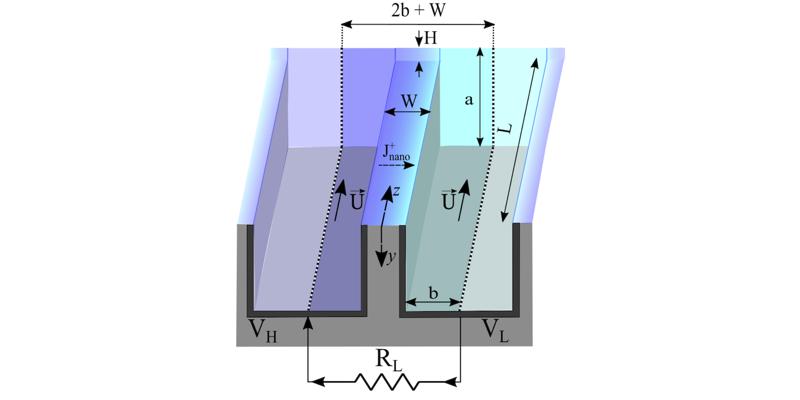- Share
- Share on Facebook
- Share on X
- Share on LinkedIn
Thesis defence
On March 24, 2023

Saranath Seshadri
The mixing of two electrolytic solutions of different concentrations is characterized by a free mixing enthalpy. Its conversion into useful mechanical work or electricity can be a source of clean renewable energy commonly known as "osmotic energy" or "blue energy" in the case of mixing river and sea water. The need to drastically reduce our dependence on fossil fuels and the remarkable development of new selective membranes have encouraged the development of new blue energy extraction techniques. The establishment of large-scale power plants has identified some limitations inherent to membrane approaches for blue energy extraction, including concentration polarization. In this manuscript, we present a silicon-based nanofluid exchanger that aims to optimize the coupled transport of solutes at the nanoscale and at the microscopic scale to minimize concentration polarization problems and increase recovery energy. The focus is on the theoretical modeling of such an exchanger. Power densities two orders of magnitude higher than existing strategies are thus predicted. These theoretical results were used to design a manufacturing protocol for a multi-scale exchanger, in collaboration with the CEA-Leti, incorporating recent developments in the microfabrication industry to produce a series of massively parallelized tiny channels. The last section of the manuscript discusses such parallelization potential, which could lead to a paradigm shift in energy generation based on the salinity gradient using silicon structures.
Jury
- Anne-Laure Biance, rapportrice, (Directrice de recherche, ILM Lyon)
- René van Roij, rapporteur, (Professeur, Utrecht University)
- François Rieutord, examinateur, (Expert innovation, Soitec)
- Hugues Bodiguel, examinateur, (Professeur INP/UGA)
Date
14:00
Localisation
LIPhy, salle de conférence
- Share
- Share on Facebook
- Share on X
- Share on LinkedIn